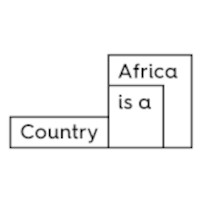Ahead of his forthcoming book on black life on the margins, Hugo Canham reflects on scholarship and literature that expand the meaning of being black on the world.
Image credit @tjabeljan via Flickr CC BY 2.0.
What is the texture and frequency of living with death emaMpondweni, in the Eastern Cape province, located in South Africa’s blighted zones of abandonment? These are places where the state serves as an absentee landlord. Here, death is an intimate constant. I am acquainted with its grooves and surfaces. Its wailing and silences. My book, Riotous Deathscapes sits with death. It emerged out of the place I thought with and wrote about rather than from a disciplinary point of view. This necessitated wide reading for writing about black life in zones of abandonment where death homes. While writing, some of the books on my desk, bedside, and bathtub included the following.
Christina Sharpe’s In the wake: On blackness and being (2016) was foundational for giving me the freedom to go to the pain unleashed by sedimented histories of white supremacy. Her emphasis on care and tending to black life was particularly appealing and useful for teaching me to care for my co-protagonists. In the wake’s opening chapter sits with the compounding losses that Sharpe suffers in her family. She writes autobiographically to do “wake work” for her own losses but braids her mourning to generations of loss since the middle passage. This authorized me to knit myself into the deathscapes that characterize emaMpondweni, the setting of my book.
N. Chabani Manganyi’s Being Black In-The-World (1973/2019) is a foundational text. First published 50 years ago, it centers black life in the oppressive regimes of apartheid in order to think with the black psyche. It is a great model for centering black subjects when they are historically so easily written out of their own story. Manganyi’s promise that “the most important contribution on the black experience will come from Africa” has yet to pass. This is a book worth reading, not only for its archival value, but for its courageous insistence on taking up epistemological space. This book found great companionship with Jacob Dlamini’s The Terrorist Album, which offers a deep dive into apartheid’s police archives. Together, these texts push against forgetting.
Tiffany L. King’s The Black Shoals: Offshore Formations of Black and Native Studies (2019) does the important work of foregrounding relations between black and indigenous studies by thinking of African American communities in relation to Native Americans in North America. I lean on The Black Shoals to suture relation between Mpondo people, San and Khoekhoe in the mountain ranges and ocean shore of the Eastern Cape of South Africa. Like Edouard Glissant’s Poetics of Relation (1997) cleared ground to harvest the possibilities of being in relation, The Black Shoals is likely to inspire scholars for generations to come.
Decolonization and Afro-feminism (2020) is Sylvia Tamale’s thoughtful engagement with the reappearance of the decolonial turn in the academy. I found her intellectual commitments to African feminism inspiring for my own situated thinking about rural African women. Tamale adeptly illustrates how African women have historically seen the natural world as implicated in and inseparable from their own lives and well-being. For African women, eco-feminism is not a choice but a way of being in the world.
How to go mad without losing your mind: Madness and black radical creativity (2021) by La Marr Jurell Bruce is an inspired model for untethering black madness from the psy-complex in order to read the sociality of black madness amongst black creatives. Its musicality in form and content is a graceful method of compassionate theorizing. Read alongside Jayna Brown’s Black Utopias: Speculative life and the music of other worlds (2020), How to go mad gave me tools to think about adolescent girls ukukupuka izizwe or world making through spirit possession. Through these texts, I was able to read spirit outbreaks as black world making that refuse racial capitalist enclosures and entrapment in individualising psychological registers of meaning making.
Keguro Macharia’s Frottage: Frictions of intimacy across the black diaspora (2019) returns us to the erotic, provides a method for thinking between black geographies, and creates something new and worth emulating. I read Frottage alongside scholarly papers by Neo S. Musangi. Together, these Kenyan scholars dec-enter Western queer studies and give us something capacious and recognisable to African readers. Their rereading of queer is inviting, embracing, and spills over, eschewing neat definitional constraints.
What is slavery to me?: Postcolonial/slave memory in post-apartheid South Africa (2010) written by Pumla D. Gqola was a valuable source that I returned to years after my initial encounter with the text. The book’s approach to thinking about enslavement in South Africa is a refreshing take on an old subject. I read this book alongside Yvette Abrahams’s encyclopaedic work on slavery and Gabeba Baderoon’s devastating prose on Cape slavery. These works return us to some of the foundational instances of black death and enable me to trace the pathways and logics of over determined dying in present day deathscapes.
A death retold in truth and rumour: Kenya, Britain and the Julie Ward Murder (2015) is Grace A. Musila’s studied example of how to work with rumour to reconstruct the much publicised murder of Julie Ward, a British tourist on a Kenyan safari in one of the country’s national parks. Musila’s method is what African literary and film scholar Bhekizizwe Peterson called the Black Public Humanities. For me, Musila provides an exceptional method for thinking with archives and popular culture in African scholarship.
I offer this reading list as an ode to ongoing black survivance and aliveness in Africa in the wake of ongoing capture.






